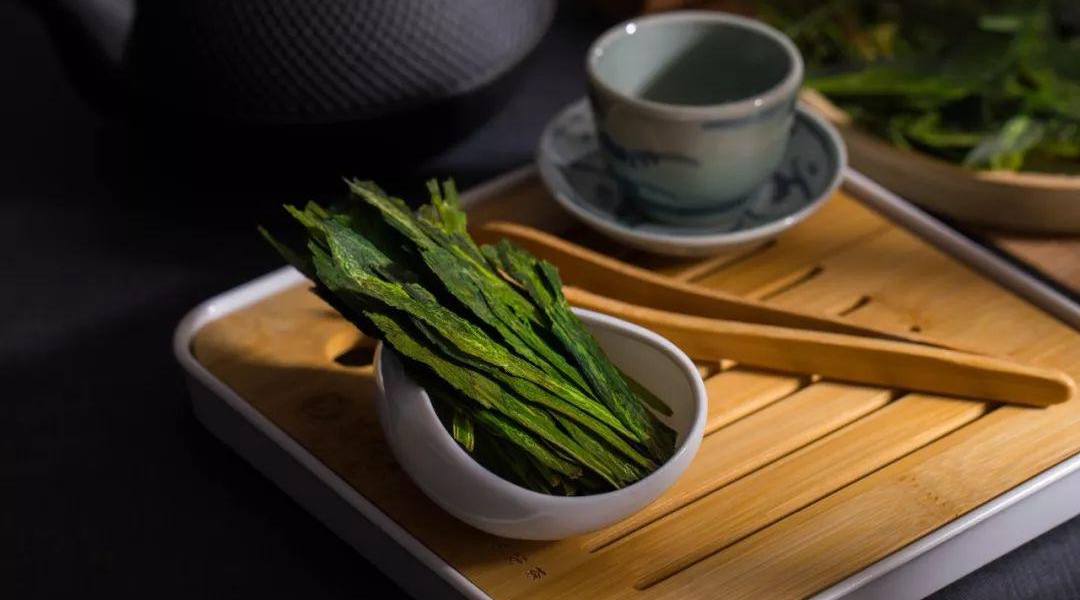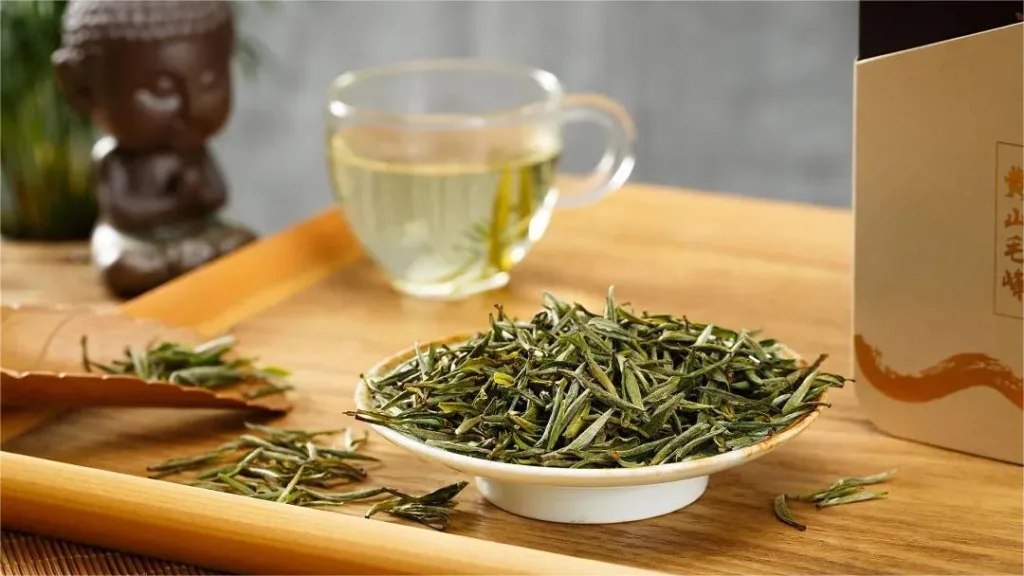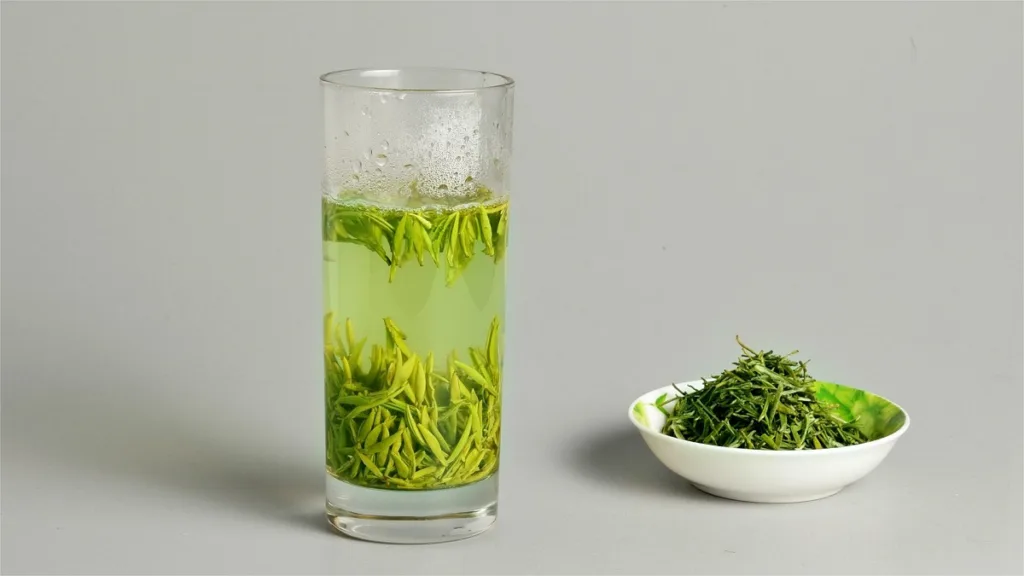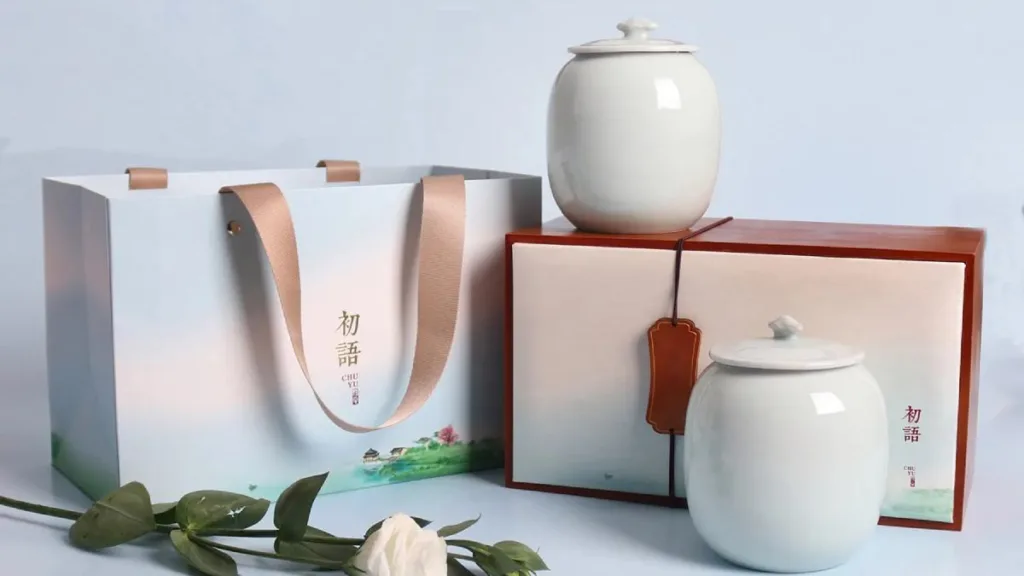Taiping Houkui tea, a jewel among Chinese traditional teas and one of China’s historical masterpieces, belongs to the category of green tea, specifically known as “tip tea.” This exceptional tea is cultivated in the region of Taiping County, now part of Huangshan City in Anhui Province, China. Taiping Houkui is renowned for its unique appearance, characterized by two leaves cradling a bud, resulting in flat, straight, and gracefully extended tea leaves with subtle white down. It has earned the nickname “Houkui with two sharp ends, non-scattering, non-curling” due to its distinctive shape. Taiping Houkui is often considered the predecessor of “Taiping Tip Tea.” In 2004, it earned the title of “Tea King of Green Tea” at the International Tea Expo and has participated in global events such as World Geographical Indication Congress and World Expos.
A Journey Through History
The roots of Taiping Houkui can be traced back to the mid-19th century during the Xianfeng period (1859). It was in the picturesque surroundings of Taiping County, a region blessed with high mountains, fertile soil, and abundant mist and clouds, that the predecessor of this exquisite tea was first crafted. Zheng Shouqing, the forefather of Taiping Houkui, established a tea garden along the banks of Machuan River. With careful cultivation and meticulous processing, the tea leaves produced were flat, straight, fresh, and carried a delightful orchid fragrance. These teas were aptly named “Taiping Tip Tea.”
However, it was the relentless dedication of the tea farmer Wang Kuicheng, known as “Wang Lao’er,” residing in the Houkou area, who played a pivotal role in advancing the quality of Taiping Houkui. He recognized that the key to producing a superior tea was meticulous selection during the plucking stage. In his mountain tea garden at an elevation of 750 meters in the Fenghuo Peak region, he hand-picked young, robust bud-and-two-leaf sets of tea leaves. His expert craftsmanship resulted in a top-grade tea, known as “Wang Lao’er Kuichun.” This tea’s quality set the standard for Taiping Houkui, and its creator’s name, Kuicheng, and the region of production, Taiping County’s Houkeng area, were merged to coin the name “Taiping Houkui.”
Brewing Method
Brewing Taiping Houkui is a simple and enjoyable process that allows you to appreciate the tea’s subtle flavors. Here’s a straightforward method to brew this exquisite green tea:
- Choose Your Teaware: Opt for a tall, clear glass cup or a traditional Gaiwan or Yixing clay teapot to witness the tea leaves’ graceful unfurling during the brewing process.
- Measure the Tea: Place 3-5 grams of Taiping Houkui tea leaves into the cup or teapot. It’s advisable to put the tea leaves with the stems facing downward.
- Pour Hot Water: Heat the water to around 90°C (194°F), and slowly pour it over the tea leaves, filling the cup or teapot to approximately half-full. This initial pour allows the tea leaves to gently expand.
- Steep and Enjoy: Wait for a few minutes as the tea leaves unfold and infuse their flavors into the water. Once the tea has reached an ideal drinking temperature, savor its delicate taste. It’s recommended to drink only about one-third of the infusion and leave the rest for later infusions.
The Health Benefits of Taiping Houkui Tea
Taiping Houkui tea offers a range of health benefits due to its unique composition. As a green tea, it contains various bioactive compounds that contribute to well-being:
- Stimulating Effect: The caffeine in Taiping Houkui tea can provide a mild stimulating effect, helping to enhance alertness, mental clarity, and reduce fatigue, making it a great choice for a pick-me-up.
- Diuretic Properties: The caffeine and theobromine found in the tea can act as diuretics, promoting urine production and aiding in the elimination of excess fluid. This can be helpful for managing conditions like edema and urinary retention.
- Cardiovascular Support: The tea contains catechins and antioxidants that support heart health by reducing cholesterol levels and inhibiting the oxidation of LDL cholesterol. This may help lower the risk of heart disease and improve blood circulation.
- Anti-Bacterial and Anti-Viral Effects: The tea’s polyphenols, such as catechins, have shown anti-bacterial and anti-viral properties, making it useful for oral hygiene and potentially combating infections.
- Weight Management: The combination of caffeine and bioactive compounds in green tea can enhance metabolism and contribute to weight loss. It may help in burning fat and improving overall body composition.
- Anti-Aging Benefits: The antioxidants in Taiping Houkui tea can help combat oxidative stress, protecting cells from damage and contributing to anti-aging effects.
- Dental Health: Fluoride content in the tea can strengthen teeth by forming a protective layer that prevents cavities. Rinsing with green tea can help maintain oral hygiene and reduce bad breath.
- Anti-Cancer Properties: Certain compounds in green tea, such as polyphenols, have been studied for their potential to inhibit the growth of cancer cells. While the evidence is still evolving, regular consumption of green tea is associated with a reduced risk of some types of cancer.
- Skin Benefits: The vitamin C in Taiping Houkui tea can promote healthy and youthful skin. It acts as an antioxidant, protecting the skin from damage caused by free radicals and UV radiation.
Conclusion
Taiping Houkui tea, with its rich history and exceptional qualities, is not only a delightful beverage but also a source of potential health benefits. Whether you’re seeking a stimulating pick-me-up or aiming to incorporate a health-conscious choice into your daily routine, Taiping Houkui offers an exquisite and holistic tea experience. Its unique appearance, delicate flavor, and numerous health-promoting properties make it a tea worth exploring and savoring. Enjoy the elegance and charm of this fine Chinese green tea as you embark on a journey of taste and well-being.




